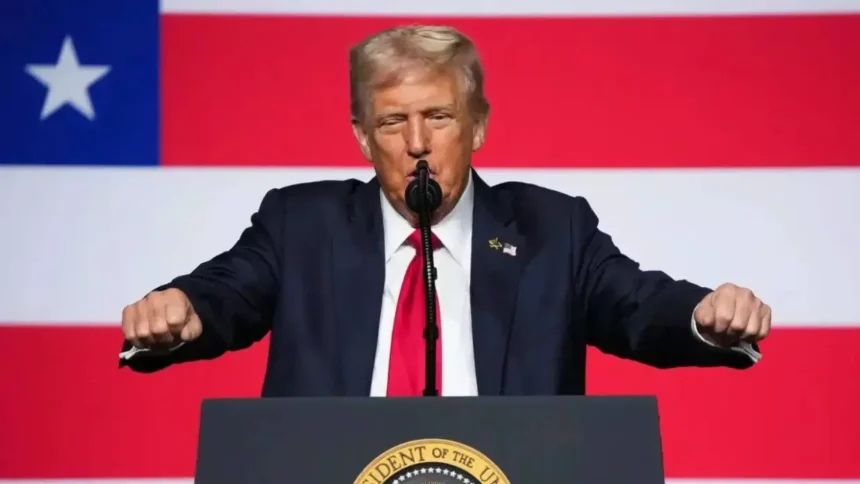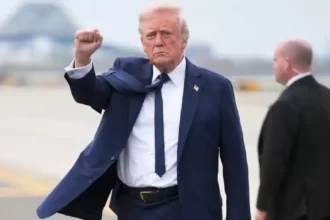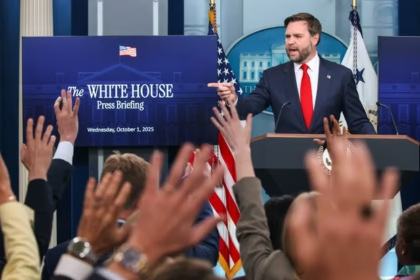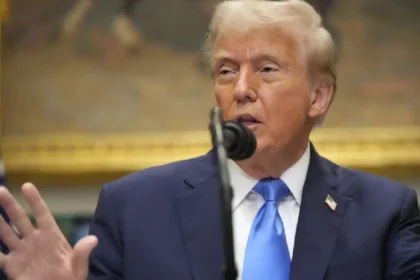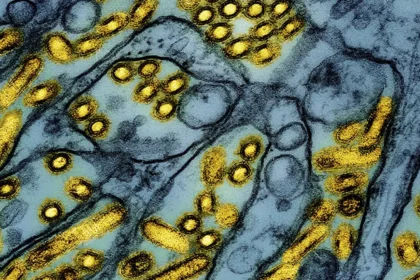President proposes direct payments from tariff revenue to households
President Donald Trump announced a major new policy proposal in which most Americans would receive a dividend of at least $2,000 each, financed by federal tariff revenue. The bold plan ties his trade and tariff agenda directly to household economic relief, elevating the idea of using government trade policy as a form of redistribution.
In a post on his social media platform, Trump declared: “A dividend of at least $2000 a person (not including high income people!) will be paid to everyone.” The announcement comes as his administration reports record revenue from tariffs, and as he continues to defend his trade strategy amid legal and political scrutiny.
The Dividend Plan Explained
The proposed “tariff dividend” would tap into revenue generated by the sweeping tariffs enacted by the Trump administration. Trump argues that the tariffs, which he has defended as strengthening the U.S. economy and reducing inflation, have created a pool of funds that can be shared with American households. He suggests that excluding high‑income individuals allows the payments to focus on middle‑ and lower‑income families.
The idea is to treat tariff revenue not merely as a tool of trade policy or revenue collection, but as a form of citizen benefit distributing a portion of the proceeds back to the public. While the exact mechanics remain unclear, and congressional approval would likely be required, the proposal signals a significant shift in how trade policy is being framed.
Why Trump Is Making This Move
There are several reasons behind Trump’s timing and approach. First, by linking tariffs directly to a personal payment to households, he is seeking to transform what has traditionally been an elite or business‑focused policy into a populist agenda item one that resonates with voters who feel left behind by globalization. Second, this move comes amid political headwinds: concerns about inflation, economic inequality and stagnant wage growth all play into a narrative of sharing the benefits of national economic policy more broadly.
Additionally, the proposal may serve Trump’s broader strategic and electoral aims. By promising a direct payout, he is creating a compelling headline and reframing trade as immediately relevant to everyday Americans. It also gives him a tangible policy promise to carry into the next electoral cycle.
Legal and Political Challenges
However, the proposal is not without obstacles. For one, many of the tariffs on which the revenue relies are under legal challenge. Courts are currently considering whether the president has the power to impose such sweeping tariffs under existing statutes without Congressional approval. Should the tariffs be struck down or modified, the revenue source for the dividend could evaporate.
Politically, while the concept might appeal to voters, many members of Congress especially within his own party have expressed caution. Some Republicans have long argued that tariff revenue should be used first to pay down the national debt or fund other programs rather than for direct payments. The question of eligibility, administration and cost also remains unresolved. At the suggested rate ($2,000 per person), the price tag would run into hundreds of billions of dollars depending on participation.
Implications for American Households
If implemented, the dividend could provide a meaningful boost for many families. At $2,000 per person, a family of four could receive $8,000. That kind of payment could alleviate short‑term cost pressures, especially in areas like food, housing and medical expenses. It also reframes the benefits of trade policy in personal terms rather than macroeconomic metrics.
However, critics argue that tariffs often raise costs for consumers since import duties are typically passed on in higher retail prices. Thus, the net benefit to families may be less clear. Moreover, questions remain about targeting: excluding high‑income individuals may require income thresholds, which would complicate administration.
Reactions and the Road Ahead
The immediate reaction has been mixed. Supporters say the plan demonstrates innovative thinking and bridges the gap between economic policy and everyday citizens. They argue that if tariffs succeed in generating meaningful revenue, returning some of that revenue to the public is only fair.
Opponents caution that the plan may be premature and risk fiscal irresponsibility. They note that the treasury’s ability to sustain such payouts depends on legal clarity around tariffs and long‑term revenue projections. Some also argue that trade policy’s main benefits are structural like manufacturing job gains and higher productivity not one‑time payments.
At this point, policymaking remains justifiably skeptical. For Trump’s dividend plan to become reality, legislation will need to be drafted, debated and passed by Congress. The administration must also clarify eligibility, how much will be distributed, the payout mechanism, and how this fits into broader budget and debt priorities.
Final Thought
President Donald Trump’s tariff dividend proposal marks a bold attempt to fuse trade policy with direct household benefits. By pledging at least $2,000 per person to most Americans from tariff revenue, he is reframing tariffs as not just a tool of national economic strategy, but as a means of personal economic support. Whether the idea survives the legal, fiscal and political hurdles ahead remains uncertain—but for now, it showcases how the administration is thinking about redistribution, trade and populist messaging in tandem.


